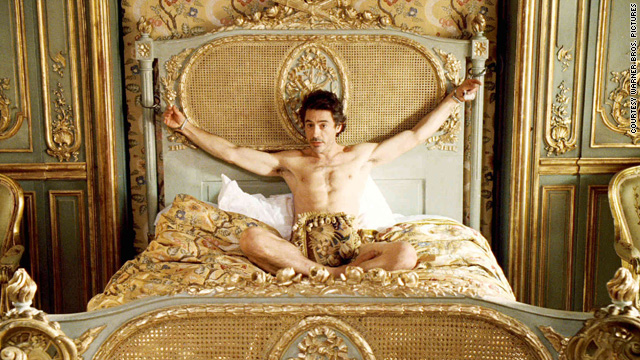 While this blog is geared towards girls franchises, the answers to the questions below its headline are really non-gender specific but seem to come up again and again in conversations about gender, narrative, storytelling and marketing the problem with most content driven towards girls is that it shows characters without much complexity and limited world that surrounds them. The same problem exists when you look at many male-oriented franchises, and when you look at characters in franchises without a gender-bias.
While this blog is geared towards girls franchises, the answers to the questions below its headline are really non-gender specific but seem to come up again and again in conversations about gender, narrative, storytelling and marketing the problem with most content driven towards girls is that it shows characters without much complexity and limited world that surrounds them. The same problem exists when you look at many male-oriented franchises, and when you look at characters in franchises without a gender-bias.So, stereotyping of both genders, poorly considered secondary characters, and plots that make those characters act outside of their core personalities are major flaws that diminish storylines and diminish the possibilities to extend a franchise. (Tangent: this is a great article about the Plot vs. Story issue that was on io9.com last year)
In his review of Disney Fairies: Tinker Bell and the Lost Treasure on Nintendo DS for IGN Jack DeVries said something that had me giggling manically: Why Can't I Be a Boy Fairy?
It would have been nice if players could create boy fairies though. I realize that a large majority of players will be girls, but there are male characters in the movies, and games, so it seems like the developer could have had the option. One of the cooler features in the game is that players can transfer their fairy and ingredients to the online multiplayer Pixie Hollow game, essentially turning this game into one giant mini-game for the online world.There was something just so deeply charming and amusing to me about hearing a critique of a game that I've heard so many times in the opposite direction from women and girls, "Why Can't I play as a girl?" When Fable came out there was much hay made about the fact that a game touted as a game about choices didn't even have the option of creating a female avatar, which was addressed by the developers in subsequent chapters. But the inclusion or exclusion of male or female characters in franchises aimed at one gender goes way beyond video games.
I remember that as a little girl, I always wanted to play as a girl when my male friends and I made-believe on the playground that we were Teenage Mutant Ninja Turtles, but playing as April was somewhat anticlimactic as playtime might dissolve into an argument about whether or not she could also be a ninja. Thank goodness Carmen Sandiego was around to steal landmarks and be totally awesome or I might never have gotten past the arguments to be a female submarine captain in the library bookshelves, or as a CEO trading basketball players from team to team during lunch hour. (I still have no idea why the exclusively sports playing guys went along with my friends and my nerdy machinations, but they did and it was great!)
My friends were always male and female; in real life kids have friends that are both male and female, but in the stories presented to them tend to show groupings that are overwhelmingly one gender or another. In games, movies, animated series, and books, there tends to be a lack of this reality shown. One thing that Mr. DeVries points out is that in the Disney Fairies movies, and the franchise as a whole, there ARE male fairies. Disney Fairies is actually a great example of a franchise that is doing something to actually show male and female friends in realistic situations, even though it's primary audience is female and likely to remain so.
TinkerBell has several male friends, her closest friend being Terence, a dust-keeper talent fairy. There is a great verisimilitude in this friendship that is explored in the most recent DVD TinkerBell and the Search for the Lost Treasure, and in the extensive book series. But there's more than just one male character, there's also Bobble and Clank, who are TinkerBell's friends and fellow tinkers, and they get as much time as TinkerBell's female friends when they aren't directly involved in the story. In addition to there simply BEING mixed genders the talents are not distributed by gender exclusively, TinkerBell herself is a tinker, an inventor and engineer, the Fairy in charge of Spring is male, both genders are equally concerned with bugs, flowers, fairy dust, and adventure.
It would be very satisfying to see some franchises aimed at young boys treating their worlds and the people, male and female, that inhabit them with the same sense of reality. There are going to be women around somewhere no matter where these boys go in real life, they will have to deal with them sensibly or face serious consequences. The same concern about whether girls are being shown positive images and realistic ones that make them aspire to do inspiring things and prepare them for adulthood should be asked in relationship to what boys are being shown, beyond the obvious critiques about violence so often thrown at franchises. Boys, as well as girls should be able to see cross-gender friendships and normal relationships between peers in their entertainment because not only is it interesting, it helps them understand the world around them and demystifies the opposite gender.
The next time you hear someone groan about how "they don't understand women" or "they don't understand men" think about what the male and female characters presented to them from infancy to adulthood have showed them, and the question of why they might not understand these mysterious alien creatures tends to answer itself.




